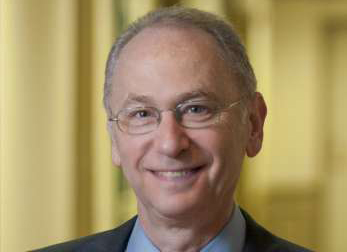
TSP or Powerball: Your call
If you are associated with the government there are a couple of ways to become a millionaire — legally: Buy a lottery ticket or max out in the Thrift Savings...
If you are associated with the government, as you and I are, there are a couple of ways to become a millionaire — legally.
Those choices are:
- Buy a lottery ticket and hope lightening will strike.
- Max out in the Thrift Savings Plan for your entire career and take advantage of the 5-percent government match.
So far about 34,000 federal and postal workers and retirees have hit the 7-digit number on their TSP. Some lost their status thanks to the October ups and downs of the market, but others — even as the markets went up and down — moved into the $1 million club.
Having chosen the lottery route, I have good news. Nice guys don’t always finish last. I won the lottery — not the lottery, but some of it.
On Tuesday I invested $5 and hit it, first time ever. That’s the good news. The downside is that I was in an office pool with 54 colleagues. What we did win was $6.00 which works out to about 11 cents each. Invest $5 and get back 11 cents. What’s not to like? Winning feels good.
In the meantime, the TSP is looking better all the time.
Earlier this week we asked readers who have big TSP accounts how they did it. Here are some of the responses, including one from a husband and wife team who each have million dollar TSP accounts:
“I’m one of those 34,000 millionaires. I recently retired at age 57 after 32 years of service with the Defense Department. How did I do it? I joined TSP as soon as I could and started with 5 percent contributions to get the most matching possible. I moved it to 10 percent as quickly as I could.
“Everything went into the C fund. I left it there and never touched it. I took a big hit twice but stayed the course. I finally moved everything to the Lifecycle 2020 fund about three years ago when I realized I could retire in the next few years. I also took advantage of catch-up contributions in the last year. I should have done that sooner but hindsight is 20/20.”
— Ed S.
“I am a Civil Service Retirement System retiree with a TSP valuation over $800,000. I retired in January 2016. My TSP investment story is I paid attention. When the NPR show ‘Marketplace’ was talking recession in June 2008 I listened [and] moved into the G fund. In April 2009 … I moved back in on the C and S funds. I had paid off my home in 2003 so I was investing the max in TSP and had hit $50,000 in 2008. So I did the catch-up contribution.
“I timed the market fairly well by listening to the radio and graphing the daily values of the funds … My advice is watch the market for big trends. Be aware of your account number and password, and seek safety during recessions.”
— C. Quinn
“It’s been a long time since I’ve written you. I became a civil servant at the beginning of 1988 and retired in 2018 after 30 years. The first few years were tough with a lot of things competing for my paycheck. In the beginning I put just enough into the TSP to get the agency matching contributions. After all, that is free money! There weren’t all of the places we now have to put the money back then, so I split it between the G and F funds.
“As step increases, pay raises, and promotions came my way, I put most of the increase into the TSP. If it did not appear in my bank account, I could not spend it. You need to pay yourself first. Eventually, I moved everything except what was in the G fund over to the C fund. That is also where all new contributions were made. I eventually got married to another like-minded fed and it became easier to contribute to the TSP as the monthly bills didn’t double with marriage.
“The TSP amounts started to build with the dotcom boom, but then there was the dotcom bust after the turn of the century. That downturn wiped out, on paper, a sizable portion of our TSP balances. We stayed the course and bought all the way down and back up the other side. Stocks were on sale during that period. Our TSP balances grew by leaps and bounds the next couple of years, quickly recovering all that was lost and then some because we had kept buying every two weeks. The same thing happened again in 2008 — lather, rinse, repeat.
“When I retired at the beginning of the year, my wife and I each had TSP balances well over $1 million. If I had to sum up our method, be boring and don’t watch the market from day to day. Just pay yourself first, be aggressive, and don’t get emotional about all of the paper gains and losses. Most importantly, never try to time the market. Just buy and hold like Warren Buffet preaches. It works!”
— Comfortably Retired
Nearly Useless Factoid
By Amelia Brust
The world’s most expensive burger costs $5,000 and is made by Juicys Foods and Ovations Foodservices for Juicys Outlaw Grill, based in Corvallis, Oregon. It weighs 777 lb and is available for ordering with 48 hours notice. Another $5,000 burger is the FleurBurger 5000 at the Mandalay Bay Casino in Las Vegas, but that burger includes a drink.
Source: Time
Copyright © 2025 Federal News Network. All rights reserved. This website is not intended for users located within the European Economic Area.
Mike Causey is senior correspondent for Federal News Network and writes his daily Federal Report column on federal employees’ pay, benefits and retirement.
Follow @mcauseyWFED





